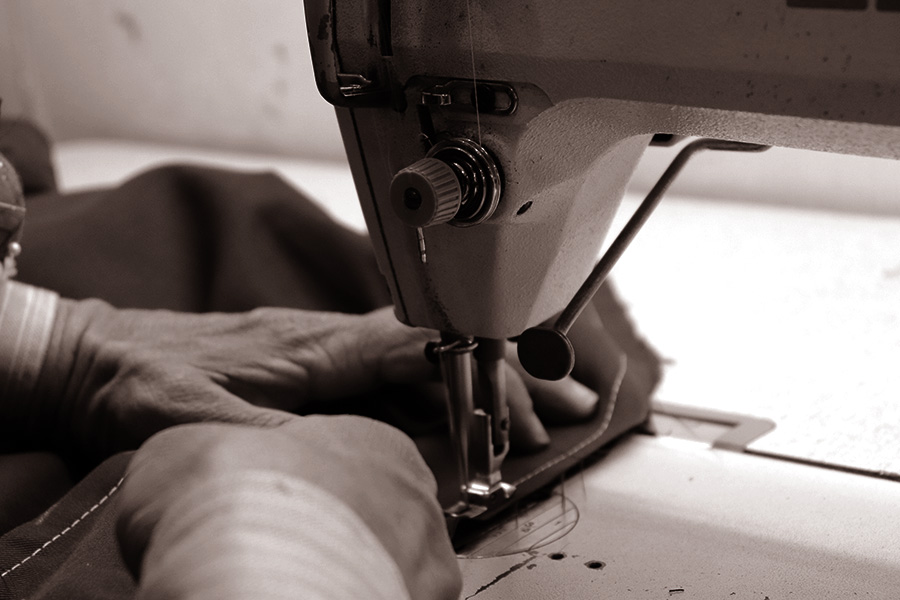Tailor Perth Quality: Where High Quality Satisfies Personalized Tailoring
Tailor Perth Quality: Where High Quality Satisfies Personalized Tailoring
Blog Article
Understanding the Tailoring Process: From Textile Option to Last Suitable for the Perfect Closet
The customizing procedure is an intricate interaction of art and scientific research, starting with the critical choice of material selection and culminating in the precise modifications of final installations. Each textile type brings special top qualities that affect not only the aesthetic allure yet additionally the garment's long life and suitability for various occasions. Recognizing the nuances of tailoring strategies can boost one's closet to unprecedented degrees of sophistication. As we check out these elements better, one need to think about just how also the smallest information can dramatically impact the general result of one's personal design.
Significance of Material Option
Picking the appropriate material is essential in the customizing process, as it straight influences the convenience, durability, and total aesthetic of the final garment (tailor perth). The option of textile establishes the foundation for the garment's performance, efficiency, and design. Different materials possess distinct residential or commercial properties, such as stretch, breathability, and weight, which can dramatically influence just how the garment drapes and fits the body
In addition, fabric choice impacts the garment's longevity and ease of treatment. Top quality materials can endure deterioration, preserving their appearance and structure over time, while lower-quality materials might bring about pilling or fading. In addition, the ideal textile contributes to the garment's capability to shift across seasons and celebrations, thus enhancing flexibility.
A tailored piece made from an appropriate textile not just showcases craftsmanship but likewise raises the wearer's self-confidence. Subsequently, recognizing the nuances of material option is critical for any type of tailoring undertaking. It makes certain that the last product not just satisfies the aesthetic desires of the customer but additionally lines up with practical requirements, thereby accomplishing a harmonious equilibrium between kind and feature in the tailored closet.
Kinds Of Fabrics and Their Usages
Understanding the numerous kinds of fabrics offered is vital for making notified decisions during the tailoring procedure. Each fabric has one-of-a-kind characteristics that determine its suitability for details garments and events.
Its flexibility allows it to be customized right into every little thing from t-shirts to gowns. Its all-natural elasticity helps garments preserve shape over time.
Silk emanates luxury and is lightweight, making it best for eveningwear and delicate blouses; nevertheless, it calls for mindful handling due to its fragility. Linen, with its textured surface, is a prominent choice for warm climates, offering a crisp and ventilated feeling, however it wrinkles conveniently, which might influence the garment's look.
Artificial textiles, such as polyester and nylon, offer longevity and resistance to creases, making them ideal for day-to-day wear and energetic clothing. Comprehending these material types and their residential or commercial properties enables for better decision-making, making sure that each customized item not just fits well however also aligns with the intended function and occasion.
The Tailoring Techniques Explained
The art of tailoring counts on a variety of techniques that change textile right into well-fitted garments. Central to this process is pattern drafting, where a tailor creates layouts based upon the client's dimensions and wanted design. This preliminary step ensures that the garment will certainly fit the user correctly prior to any kind of cutting occurs.
As soon as patterns are developed, reducing strategies enter play. Precision is paramount as errors can result in misfitting garments. Tailors commonly make use of various cutting methods, such as single-layer cutting for detailed designs and multiple-layer cutting for effectiveness on basic patterns.
Basting is another crucial strategy, enabling tailors to momentarily stitch material items with each other for an initial installation. This approach provides the chance to assess the drape and general shape prior to last stitching.
Seaming strategies, consisting of french joints and flat-felled seams, improve the garment's durability and visual appeal. wikipedia reference Tailors additionally employ official source methods such as interfacing and padding to give framework and form to particular locations, like collars and shoulders.
Finally, finishing techniques, including hemming and side ending up, guarantee the garment's durability while providing a refined look. With each other, these techniques form the foundation of reliable tailoring, leading to exquisite, custom-fit clothing.
Suitable Adjustments and Factors To Consider

Secret considerations include the shoulder fit, which needs to neither sag neither limit motion, and the sleeve length, which need to permit for comfy arm movement while maintaining a polished appearance. In addition, changes at the waist can fine-tune the silhouette, with alternatives to allow out or take in fabric as required.
The increase of trousers is an additional essential aspect; it must sit comfortably over the hips without triggering discomfort, enabling convenience of motion. Hemming lengths for both trousers and skirts ought to mirror the wearer's preferred design while respecting proportions.

Maintaining Your Tailored Clothes
Correct maintenance of tailored garments is vital to protecting their fit and look with time. To ensure longevity, normal cleansing is paramount. Always follow the care label instructions, which may suggest dry cleaning for delicate fabrics or device washing for more long lasting products. Prevent regular laundering, as this can use down the material and alter the garment's shape.
Storage space is just as important; use cushioned wall mounts for coats and layers to preserve shoulder framework, and store trousers folded nicely or hung to avoid creasing. Safeguard garments from straight sunlight, which can discolor shades and damage fibers.
Additionally, routine inspections site web for small fixings can protect against larger issues. Examine for loose switches, fraying seams, or indicators of moth damage, addressing these troubles without delay to keep the garment's stability.
Lastly, take into consideration seasonal rotation. Wearing customized pieces in moderation permits fabrics to recoup, prolonging their lifespan. By carrying out these upkeep methods, you can guarantee that your customized garments stay as pristine as the day you first used them, boosting your excellent wardrobe for several years to find.
Verdict
The tailoring procedure, encompassing fabric option, proficient methods, and precise suitable modifications, plays a critical function in producing garments that boost both convenience and design. Each stage adds to the total effectiveness of the final item, making sure that clothing not only fits well however additionally mirrors individual identification. Recognizing the importance of upkeep extends the life of tailored garments, solidifying their value in a well-curated closet. A thorough approach to tailoring finishes in a confident and polished appearance.
Picking the appropriate material is important in the customizing procedure, as it directly affects the convenience, durability, and overall aesthetic of the last garment. The option of textile establishes the foundation for the garment's efficiency, style, and functionality. Various textiles possess distinct properties, such as weight, breathability, and stretch, which can dramatically influence how the garment drapes and fits the body.
The art of customizing depends on a variety of strategies that transform fabric right into well-fitted garments.The tailoring procedure, including fabric option, skilled techniques, and specific suitable adjustments, plays a critical function in creating garments that improve both convenience and style.
Report this page